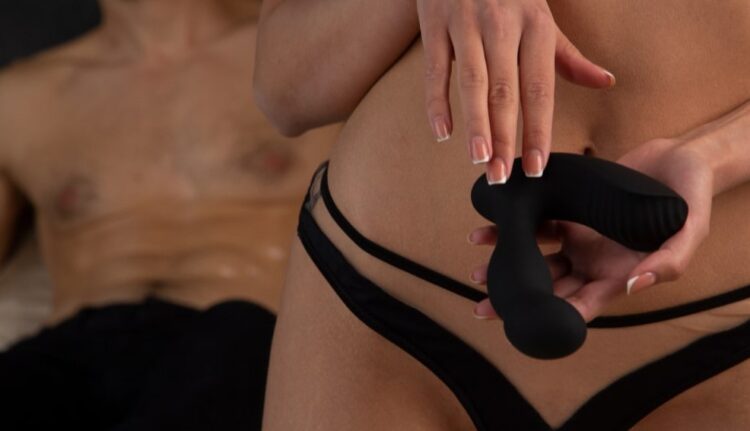Sexual wellness is a part of emotional health. Toys aren’t just about solo fun or kinky curiosity. They offer deeper insight into how people connect, what excites them, and where shame still holds power. Insecure about pleasure? Many are. Curious about exploring in a way that feels safe, honest, and exciting? You’re not alone—and you’re in the right place.
Whether someone has never touched a toy before or already has a drawer full of options, what matters most is how the experience adds to their confidence, connection, and emotional clarity. Every partner, every body, every desire tells a different story. Toys help uncover it.
Table of Contents
Pleasure Is Personal, Not Performative
People often ask, “What’s the best toy?” That question skips the more important one—what does the body actually want to feel?
Pleasure is never about performance. It starts in the nervous system, in permission, and in trust. Toys don’t replace connection. They extend it. When someone gives themselves space to explore physical cues without judgment, the body speaks. Stronger orgasms, more full-body sensitivity, less anxiety around sex—all of that starts with slowing down and getting curious.
Most adults carry shame about pleasure. It shows up in silence, eye-rolls, disinterest, or control. Toys aren’t magic solutions, but they often serve as the first permission slip people ever give themselves. That’s why this conversation matters.
Choosing the Right Toy for Your Body

A toy isn’t just a thing—it’s a tool. But not all tools fit all bodies.
There’s no point in grabbing a loud, aggressive device if the body prefers a lighter touch or deeper internal pressure. What matters most is learning the body’s unique cues—pressure preferences, sensitivity zones, and arousal windows.
For men exploring new levels of solo play or even curious about couple-friendly gear, it helps to check trusted guides with quality-focused designs. One valuable collection worth exploring is male sex toys, which include strokers, prostate massagers, c**k rings, and more. These aren’t just toys—they’re high-end, body-safe tools designed for satisfaction, and they support all experience levels.
Some first-time buyers make mistakes. They grab random online products that don’t explain much. A trusted brand makes a difference. Safety, durability, and clarity all matter. Nobody wants a toy that feels confusing, awkward, or painful.
Key guidelines when choosing:
- Avoid porous materials like jelly or rubber without medical-grade labeling.
- Stick to body-safe silicone, stainless steel, or borosilicate glass.
- Prioritize shape and sensation, not size or noise level.
- Stay away from novelty brands without transparency on testing.
Solo Use Is About More Than Just Orgasms
Solo play isn’t a backup plan. It’s emotional hygiene.
Many adults have learned to use touch only as a tool for climax. That habit cuts off deeper access to the body. When a person slows down and plays without rushing to an end goal, they create space for nervous system release, trauma resolution, and emotional balance.
Toy-assisted solo play helps people:
- Map out pleasure zones with clarity
- Lower stress levels and improve sleep
- Build sexual confidence before bringing it into a relationship
- Break harmful performance loops tied to porn or shame
Those who treat pleasure like a race miss the point. The goal isn’t just intensity—it’s intimacy, even when alone.

Safety, Hygiene, and Emotional Boundaries
Safety means more than just material choices. It includes emotional awareness, preparation, and aftercare.
Physical safety basics:
- Wash every toy before and after use with unscented soap or dedicated toy cleaner.
- Dry toys fully before storing in a clean, dry cloth bag.
- Don’t share penetrative toys without proper cleaning or barrier use.
- Check for wear, tears, or cracks that could trap bacteria.
Emotional safety rules:
- Never push yourself to use a toy because of pressure or fear of boredom.
- If a toy brings up discomfort or numbness, pause and reflect.
- Use toys with intention—not just distraction.
The healthiest sex lives are the ones with the most honesty, not the most tricks.
Partner Play and Deeper Communication
Toys can transform couple dynamics. Not because of the tools—but because of the talks that happen before, during, and after.
Adding a toy into shared intimacy requires trust. But it also requires a mindset shift. It’s not about replacing touch or proving excitement. It’s about expanding what’s possible when two people stop performing and start experimenting together.
Healthy couples use toys to:
- Disrupt stale patterns
- Bridge mismatched libidos
- Explore new sensations without pressure
- Heal resentment caused by sexual avoidance
Communication comes first. Talk about what feels exciting, what feels off-limits, and what needs to be revisited after trying something. No one ever regrets going slower.

Sex Toys and Emotional Patterns
Psychologically, toys often uncover hidden beliefs about sex.
A person afraid of vibrators might fear “needing help” or feel shame about high arousal. Someone avoiding butt plugs might carry early trauma or internalized judgments. These aren’t reasons to stop. They’re signs of a body asking for care.
Patterns show up like this:
- Avoidance of solo play = disconnection from body trust
- Overuse of toys = attempt to self-regulate stress without awareness
- Shame around using toys with a partner = fear of not being “enough”
This is where a therapist or intimacy coach helps. Not to pathologize desire but to support the healing behind it.
Starting Your Own Exploration
The first step? Stop asking what’s “normal.”
Instead, focus on what feels respectful, exciting, and emotionally safe.
Start with one item. Explore with patience. Journal what comes up physically and emotionally. If you’re in a relationship, share your reflections with your partner before involving them.
If buying a toy feels awkward, that’s common. But it’s also a sign that pleasure deserves more space in your life.

Confidence Comes From Connection
Toys are mirrors. They show what the body enjoys, what it resists, and what it’s ready to heal. The real goal isn’t just better sex—it’s deeper self-respect.
Confidence doesn’t come from nailing a technique or chasing the next big orgasm. It comes from listening to the body without judgment. From giving pleasure a voice, and then honoring what it says.
Sexual growth starts where honesty begins. Everybody is different. Every choice matters. And every touch, when guided by curiosity, becomes a path toward power—not shame.
For anyone curious but hesitant, start slow, stay present, and remember: your body already knows what it needs. You’re just learning how to hear it.
